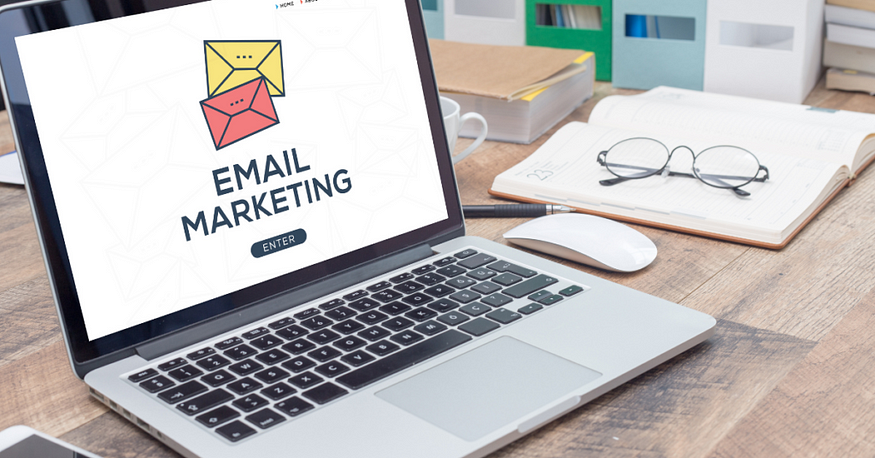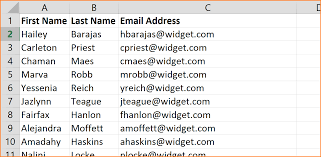How Email Marketing Works: From List-Building to Conversion
Email marketing isn’t dead. In fact, it’s one of the most cost-effective digital marketing strategies, delivering an average ROI of ₹3,500 for every ₹83 spent. From startups to global brands, businesses rely on email to connect with their audience, build relationships, and drive sales. In this comprehensive guide, we’ll walk you through the entire email marketing process, from list-building to conversions.

What is email marketing?
Email marketing is the process of sending targeted emails to a group of people to promote products, share updates, or build loyalty. It includes:
- Newsletters: Regular updates and tips.
- Transactional Emails: Order confirmations, shipping notices.
- Automated Campaigns: Welcome emails, cart abandonment, re-engagement.
Why is Email Marketing Important?
- You own your email list, unlike social media, where platforms control your reach.
- Direct communication means higher chances of engagement.
- Email marketing is measurable, cost-effective, and scalable.
A 2023 report by Campaign Monitor revealed that businesses generate ₹3,500 for every ₹83 spent on email marketing. This makes it one of the best ROI channels out there.
Why Email Marketing Works
Email marketing works because it’s
- Permission-Based: People sign up, so they’re interested.
- Personalized: Emails can be tailored to preferences.
- Timely: Send messages at the right moment.
- Trackable: Open rate, click-through rate (CTR), and conversions are measurable.
For example, a local clothing brand in Mumbai increased their monthly sales by 35% using automated email sequences. These included welcome emails, product recommendations, and post-purchase thank-you notes.
Building an Email List
Building a list is the foundation of email marketing. Here’s how to do it right:
Offer Value First
Nobody gives away their email for free. Offer:
- E-books or PDFs
- Discounts (e.g., 10% off on first order)
- Webinars or free workshops
- Exclusive content access
Example: A Delhi-based digital coach grew her list from 500 to 15,000 subscribers in 6 months by offering a free “Instagram Growth Checklist.”

Use Strategic Opt-In Forms
Types of forms:
- Pop-ups
- Sidebar Widgets
- Exit-intent Forms
- Landing Pages
Tools to use:
- Mailchimp
- ConvertKit
- Thrive Leads
Offline Collection Methods
- Collect emails at events or trade shows.
- Use QR codes linking to landing pages.
- Ask in-store customers to sign up for receipts or discounts.
Legal Compliance
Respect user data. Follow:
- GDPR (Europe)
- CAN-SPAM (USA)
- Indian IT Rules 2021
Best practices:
- Use double opt-in.
- Add unsubscribe options.
- Never buy email lists.
Segmentation & Tagging
Once you have a growing list, the next step is to segment and tag your subscribers. Not all your subscribers are the same, so your emails shouldn’t be either.
What is Segmentation?
Segmentation is the practice of dividing your email list into smaller groups based on specific criteria such as:
- Location
- Purchase behavior
- Email engagement
- Interests or preferences
Example: A Pune-based travel agency sends separate deals to people interested in domestic vs. international travel.
Benefits of Segmentation
- Higher open and click-through rates
- Reduced unsubscribe rates
- Better conversions and customer satisfaction
Tagging for Personalization
Tagging helps identify user behaviors or characteristics. For instance:
- “Visited Pricing Page”
- “Abandoned Cart”
- “Attended Webinar”
Tools like ConvertKit or ActiveCampaign make tagging easy and automatic.
Creating High-Converting Emails
Now that your list is organized, let’s create emails that convert readers into buyers.
Subject Lines That Get Opened
- Keep it under 60 characters
- Add urgency or curiosity
- Personalize with names or interests
Examples:
- “Just for You, Rahul: 20% Off Inside!”
- “Limited Seats for Our Free SEO Webinar”
Email Content That Converts
- Start with a friendly greeting
- Use short paragraphs and bullet points
- Add one clear call to action (CTA)
- Include images, but don’t overdo it
Design Tips
- Mobile-friendly layout
- Brand colors and fonts
- Use buttons for CTAs
A/B Testing
- Test subject lines
- Try different CTAs
- Send at various times
This helps you find what your audience loves and improves results over time.
To know more Read our Article



Comments
Post a Comment